Has the NHS returned to pre-pandemic service? Gimbe report

The pandemic has caused the waiting lists of the National Health Service (NHS) to lengthen, forcing people to turn to private facilities, to travel to another region, or even give up treatment. Here are all the data and the differences between regions
The aftermath of Covid-19 is still being felt on the National Health Service (NHS), which in 2022 managed to recover only 65% of the services skipped due to the pandemic and, while waiting lists continue to be too long, they persist also important differences between regions.
Problems that force citizens to have to resort to private facilities , sometimes even in another city or region, and that increase out-of-pocket spending and impoverishment, when it doesn't even go as far as giving up treatment.
It is the photograph taken by the Gimbe Foundation, whose analysis focuses on hospitalizations for scheduled surgical operations, cancer screening (invitations and services), outpatient services, overall recovery of services, funding used and the involvement of accredited private structures.
THE DATA OF THE BENEFITS TO BE PROVIDED
In January 2022, the Ministry of Health, with the "Guidelines for the recovery of healthcare services not provided due to the SARS-CoV-2 epidemic", identified three categories of priority services: hospitalizations for scheduled surgery, invitations and services for cancer screening campaigns and outpatient services.
According to ministry data cited by Gimbe, in 2020 – compared to 2019 – in Italy there were over 1.57 million fewer planned hospitalizations; for cancer screenings over 4.1 million invitations and over 2.53 million less services; finally, over 112 million "missed" outpatient services, including specialist visits, laboratory and instrumental tests.
Therefore, there are still 7.13 million services to be provided, broken down as follows: 174,000 planned hospitalizations, 914,000 invitations and 936,000 of services for cancer screening and 5.1 million of outpatient services.
FINANCING
To deal with the problem, the report refers, ad hoc resources have been allocated for the recovery of benefits: 500 million euros as per the 2022 Budget Law, which further extended the provisions of Legislative Decree 104/2020, the resources of which were not been fully utilized by the regions.
"Following the ministerial indications – explained the president of the Foundation, Nino Cartabellotta – each Region has drawn up a Regional Operational Plan (POR) where it has outlined strategies and organizational methods to recover the services not provided during the pandemic period".
THE DATA OF THE ADMISSION FOR SCHEDULED SURGICAL OPERATIONS
The report shows that overall the regions have included in the ROP over 512 thousand planned hospitalizations to be recovered, for which the Ministry of Health reports an estimated recovery of just over 338 thousand (66%).
However, the significant regional differences should be noted: from 92% in Piedmont to 14% in Liguria.
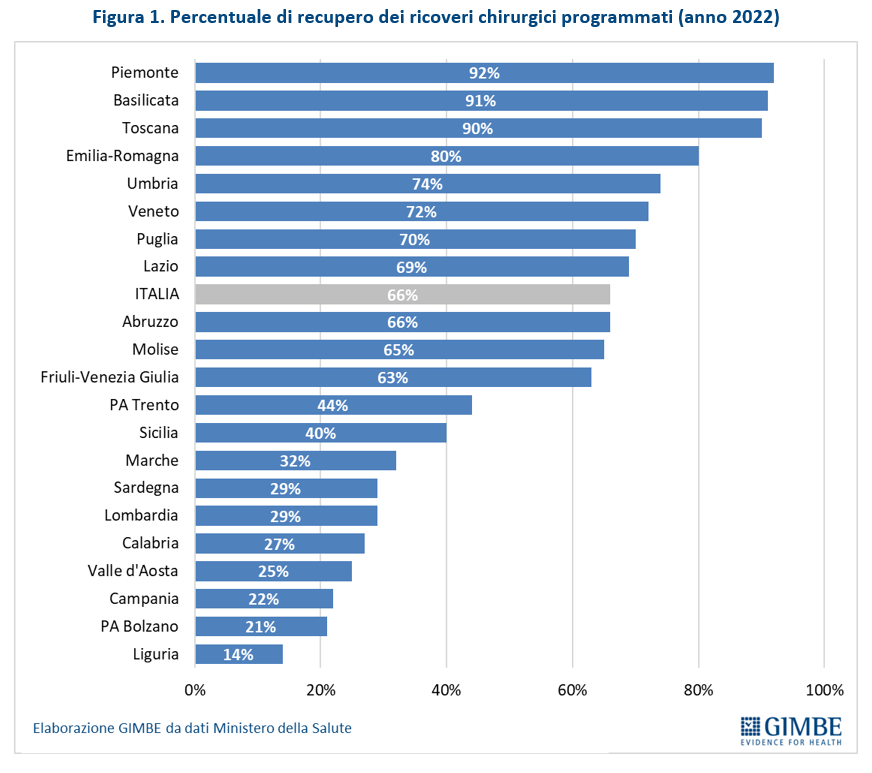
ONCOLOGICAL SCREENING DATA
The regions have foreseen in the ROPs to recover over 5 million invitations and almost 2.84 million services. The ministerial reporting reports an estimated recovery of almost 4.2 million invitations (82%) and just over 1.9 million services (67%).
Again, variations between regions persist. For invitations, for example, it ranges from 100% of Piedmont, Valle d'Aosta, the Autonomous Province of Trento, Emilia-Romagna, Tuscany, Lazio, Molise and Basilicata to 14% of Friuli Venezia Giulia.
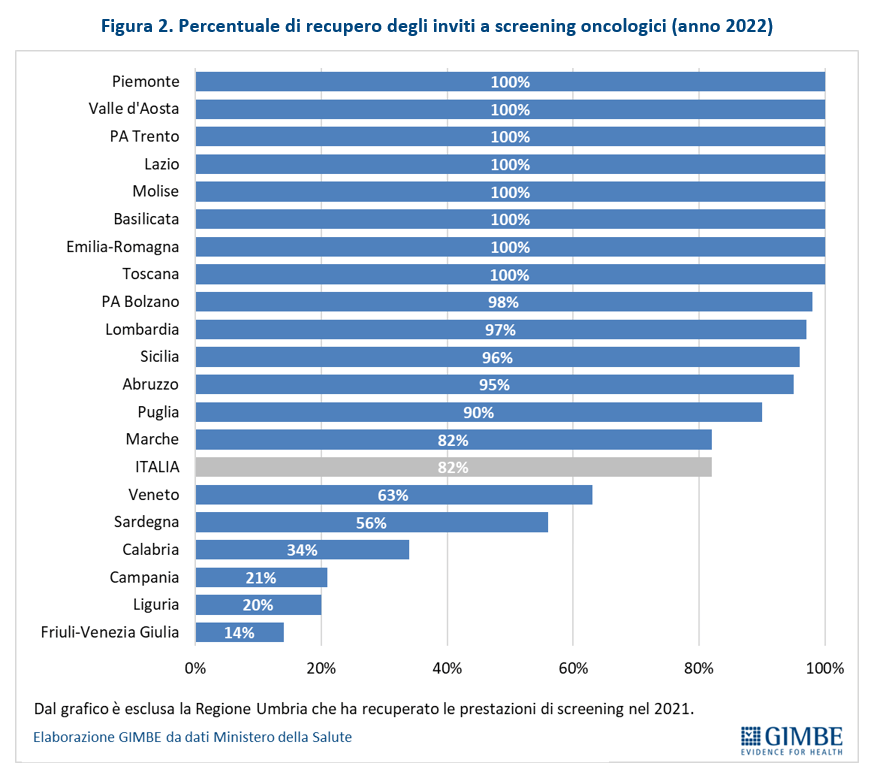
With regard to benefits, however, the recovery fluctuates from 100% in Tuscany, the Autonomous Province of Trento, Piedmont and Basilicata to 9% in Calabria and Lazio. Umbria had already recovered all screening services in 2021.
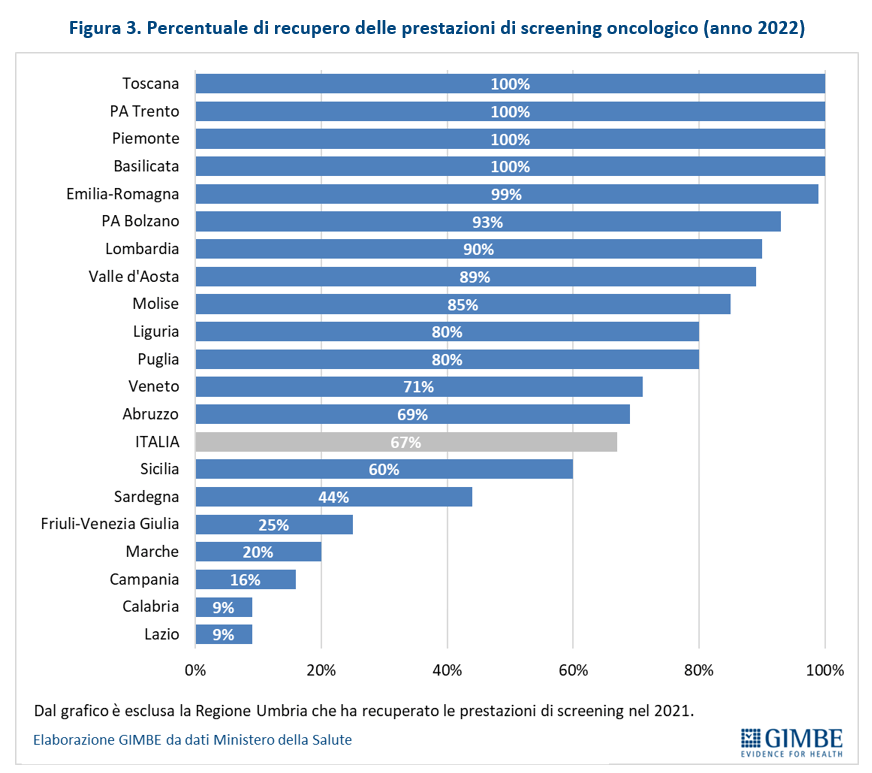
DATA OF OUTPATIENT AND NON-AMBULATORY SERVICES
With regard to outpatient services, according to the Gimbe report, the regions have planned to recover a total of almost 11.9 million services, of which the Ministry of Health reports an estimated recovery of almost 6.8 million (57%).
"A figure – declared Cartabellotta – which had significant consequences on the waiting times of the new outpatient services, and probably continues to have them, given that over 5 million remain to be recovered". Also for these benefits there are clear regional differences in terms of recovery: from 100% in Valle D'Aosta, the Autonomous Province of Trento and Tuscany to 7% in Campania.
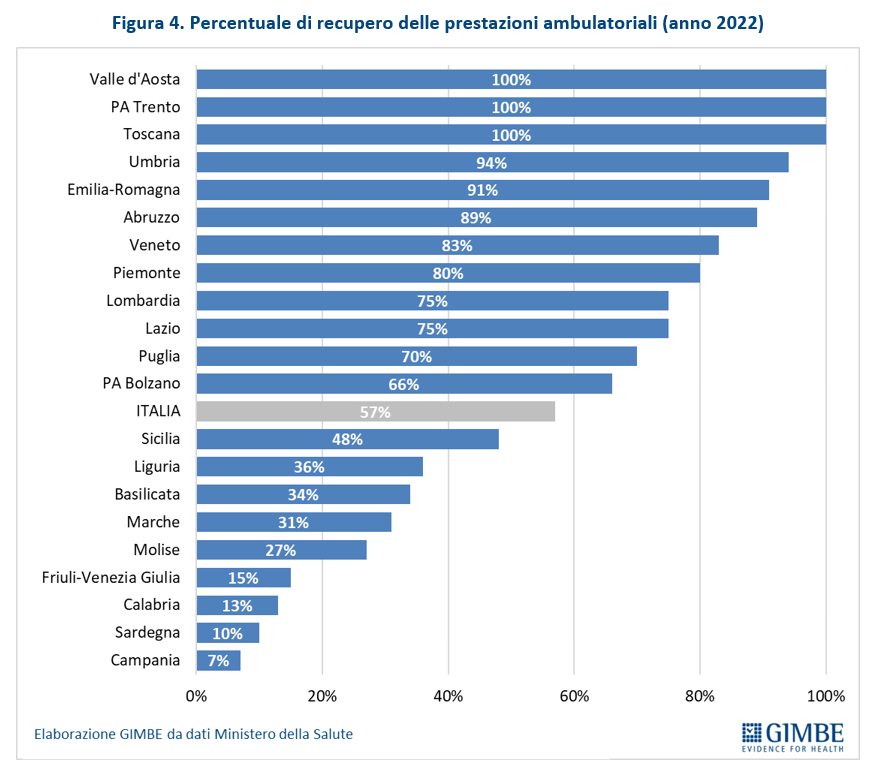
"Of the 20.3 million arrears of services, in 2022 overall just under two out of three were recovered, or 65% – added Cartabellotta – and no Region has reached the recovery quotas envisaged by the POR for all services" .
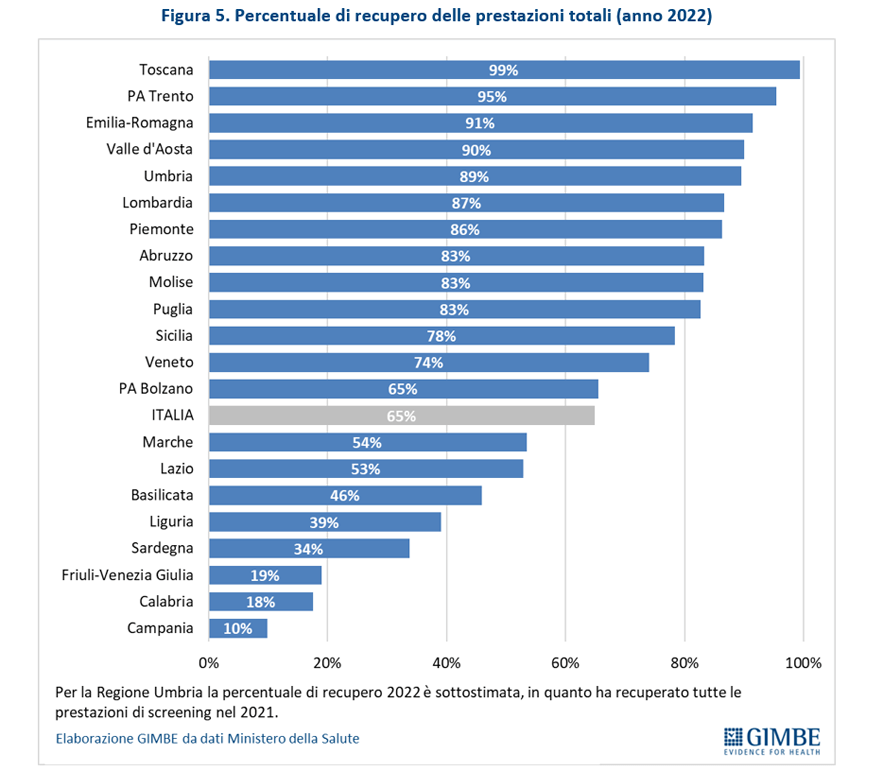
HOW MANY RESOURCES DID THE REGIONS USE?
The expenditure reported as at 31 December 2022, reports Gimbe, is close to 348 million euros, or almost 70% of that allocated, with significant regional differences: from 2% in Molise to 100% in Liguria, with some Regions (Emilia-Romagna , Friuli Venezia Giulia and Piedmont) which exceed 100%, probably due to the allocation of own resources.
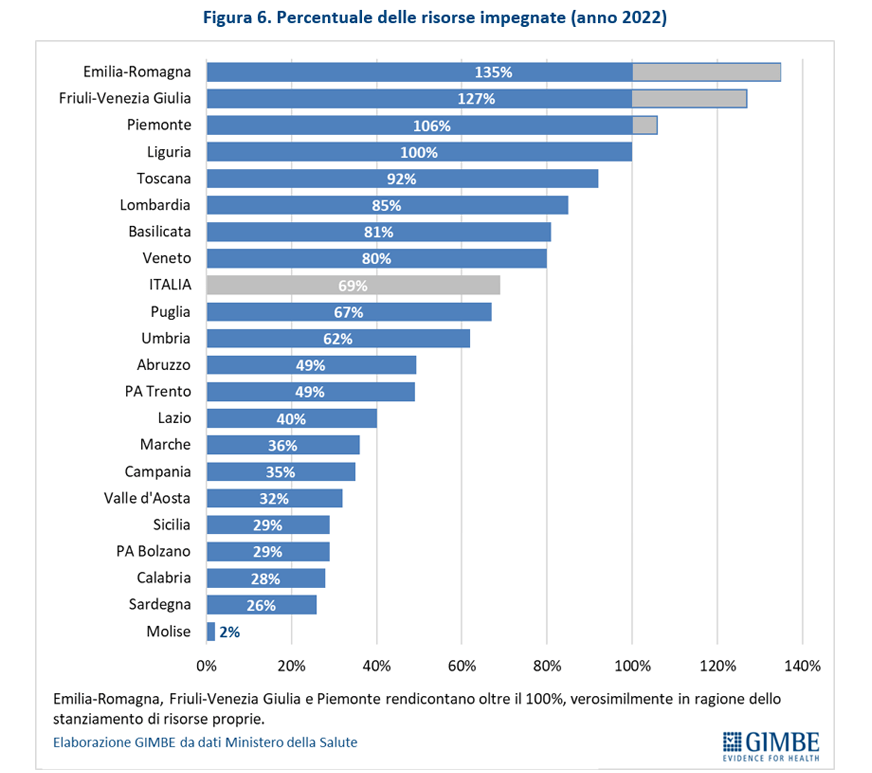
"The most relevant data – observed Cartabellotta – is that there is no direct correlation between resources used and services recovered: in other words, the reporting of the Ministry of Health reveals unexplained regional variability between resources invested and services recovered".
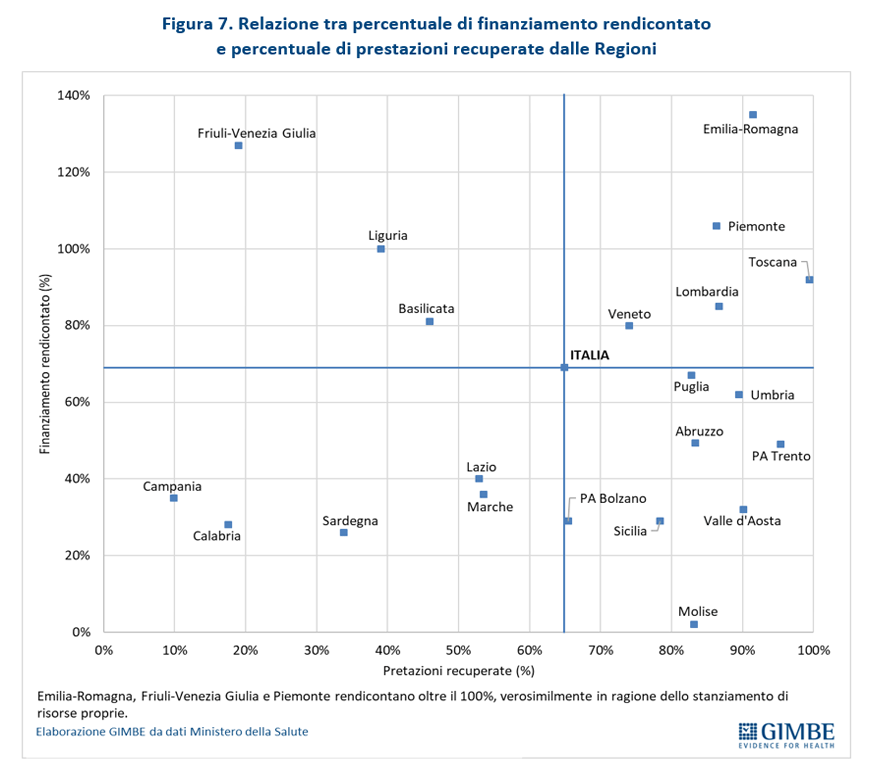
THE INVOLVEMENT OF PRIVATE STRUCTURES
In order to facilitate the recovery of services, the legislation provided that the autonomous regions and provinces could involve accredited private providers, integrating existing agreements and contracts, with the possibility of allocating to private individuals up to a maximum of 150 million euros out of the total 500 million in financing.
The Ministry of Health reports an overall estimate at national level of commissioning of private structures of 29%: in detail, 30% of the funding destined for hospitalizations, 13% of that for screenings and 32% of the resources allocated for services outpatient.
The estimated percentage of private clients is equal to or higher than the national average in Puglia (93%), Lombardy (46%), Campania (37%), Sicily (35%), Liguria (32%) and Calabria (30%) ; the other Regions are below the national value, with Marche and Molise not having recourse to the private sector.
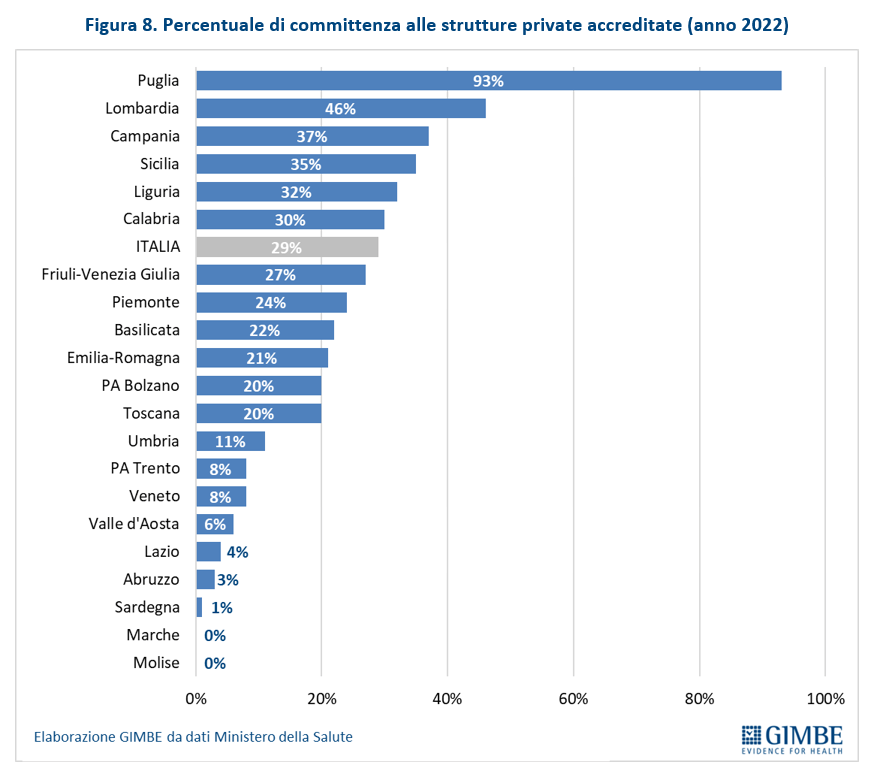
This is a machine translation from Italian language of a post published on Start Magazine at the URL https://www.startmag.it/sanita/ssn-servizio-sanitario-nazionale/ on Sun, 16 Jul 2023 05:27:34 +0000.
